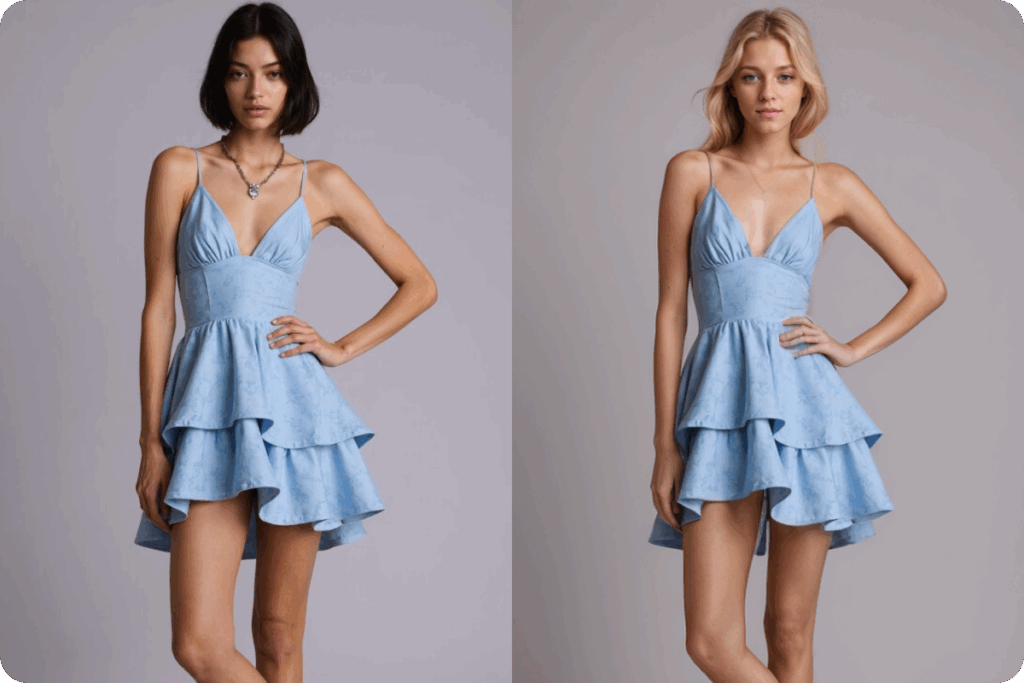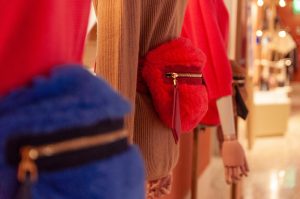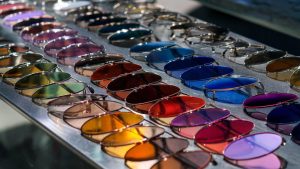Transform your fashion brand’s visual storytelling with cutting-edge AI technology that creates stunning model imagery in minutes, not months.
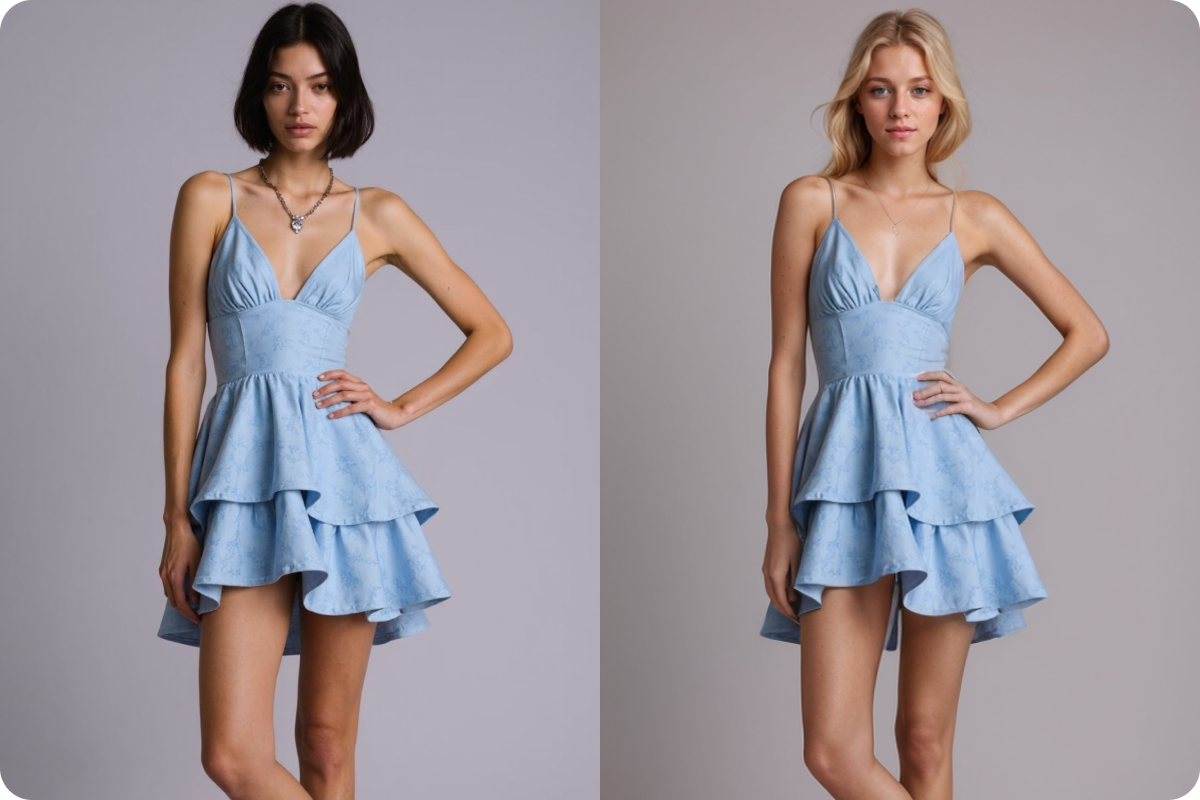
AI Fashion Model Generators
The fashion industry faces a critical challenge. Traditional model photography costs brands an average of $15,000-$50,000 per shoot . Meanwhile, fashion ecommerce conversion rates hover at just 2.9-3.3%, significantly lower than other retail sectors . This creates a perfect storm where brands need compelling visuals but struggle with budget constraints.
AI fashion model generators solve this problem by creating diverse, professional model imagery instantly. The AI fashion market is projected to reach $60 billion by 2034, with annual growth rates of nearly 40% . These tools eliminate traditional photography barriers while delivering consistent, high-quality results that boost customer engagement and sales performance. So choose the right Advanced AI Fashion Model Generator for creative Visuals of products.
Benefits and limitations of AI fashion models
AI fashion models revolutionize how brands showcase products. They offer unprecedented flexibility and cost savings. However, understanding both advantages and limitations helps make informed decisions.
Benefits:
Reduced costs: Traditional fashion photography expenses drop by 80-90% when using AI models. Brands save thousands on model fees, studio rentals, and photographer costs .
Instant adaptations: AI models adjust to different ethnicities, body types, and poses within seconds. This flexibility allows brands to test multiple variations quickly.
Quick turnaround: Generate professional model imagery in minutes instead of weeks. This speed enables rapid product launches and seasonal campaigns.
Dynamic content: Create unlimited variations for A/B testing and personalized marketing campaigns. Different demographics see models that resonate with their preferences.
Eco-friendly: Eliminate travel, physical sets, and material waste associated with traditional photoshoots. This sustainability approach appeals to environmentally conscious consumers.
Limitations:
Limited realism: Some AI-generated images may appear artificial to trained eyes. Advanced tools minimize this issue but perfection remains challenging.
Creativity constraints: AI models follow programmed parameters. Unique artistic visions may require human creativity and direction.
Inclusivity issues: AI training data can perpetuate biases. Ensuring diverse representation requires careful tool selection and monitoring.
Data dependence: Quality output relies heavily on input image quality and detailed prompts. Poor inputs generate subpar results.
Detail limitations: Fine fabric textures and complex garment interactions may not render perfectly. High-end luxury items might need traditional photography.
Diversify your AI fashion models with these 7 tools
1. SellerPic: The Next-Generation AI Tool for Fashion Model Visuals
SellerPic stands as the industry-leading AI fashion model generator & Fashion Model Swapping revolutionizing e-commerce with cutting-edge virtual model technology. This next-generation platform transforms fashion retail by ensuring accurate garment representation with every stitch, seam, and pattern detail preserved.
The platform’s simplified workspace enables brands to create realistic, professional product photos effortlessly. SellerPic’s AI technology delivers remarkable results: boosting sales conversion rates by 30%, reducing photoshoot costs by up to 90%, and cutting new product listing time by 95%.
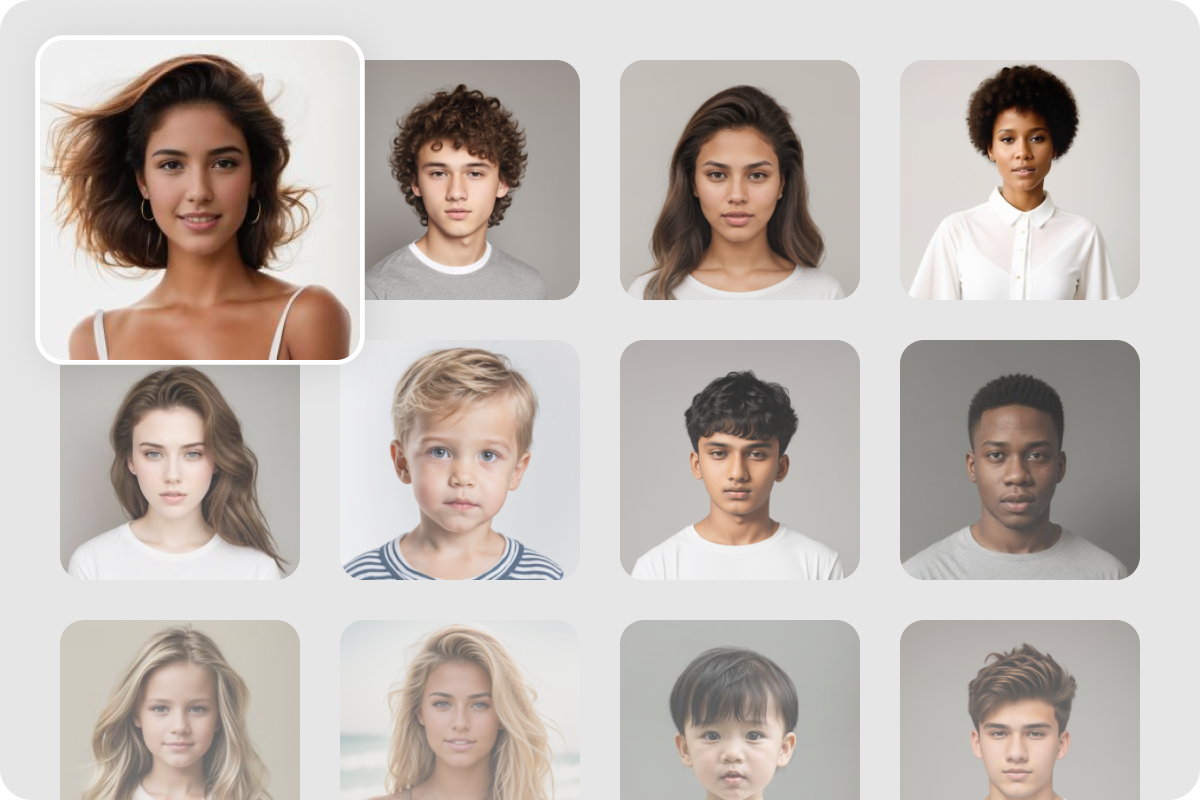
SellerPic
Key Features:
Precise garment transformation: Accurately converts original product photos into professional model shots while preserving every detail including patterns, stitches, and textures.
Versatile garment support: Handles wide variety of categories including T-shirts, dresses, suits, and swimwear, ensuring complete product range coverage.
Diverse AI model database: Enables instant model swapping with inclusive options featuring different ages, ethnicities, and body types reflecting brand identity.
Multi-angle generation: Creates comprehensive visual presentations with front, left, and right shots from single product images.
Flexible shot options: Supports full body, half body, and close-up shots adapting to various marketing requirements.
Environmental versatility: Provides indoor and outdoor setting options placing products in realistic environments matching brand aesthetics.
Scene customization: Offers lifestyle to minimalist backgrounds with custom upload capabilities for enhanced product storytelling.
Upload flexibility: Accepts flat-laid images and on-model photos for seamless workflow integration.
Virtual try-on technology: Allows shoppers to visualize products on realistic AI models without traditional photoshoot requirements.
Lightning-fast generation: Produces professional imagery in just 30-40 seconds per image.
How to use SellerPic:
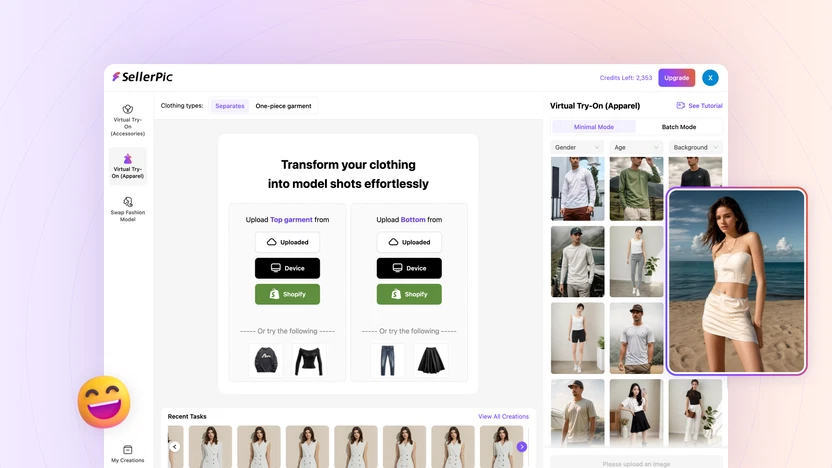
- Create your free account on the SellerPic platform
- Upload product images (flat-lay or on-model photos accepted)
- Select from diverse AI model database matching your brand demographics
- Choose preferred angles, body shots, and environmental settings
- Generate professional model imagery in 30-40 seconds
- Download high-resolution images ready for immediate use
2. Pippit
Pippit offers comprehensive AI fashion model generation with user-friendly interface design. This platform creates lifelike virtual models enhancing brand marketing strategies through advanced customization capabilities.
Key features:
- Diverse AI models capturing viewer attention across demographics
- Auto-background removal for clean, professional apparel presentations
- Multi-angle model image generation showcasing products comprehensively
- Cloud storage integration for seamless asset management
- Advanced editing features maximizing visual appeal
Pros:
- Intuitive interface requiring minimal technical expertise
- Quick customization matching various brand aesthetics
- Professional-quality output suitable for marketing campaigns
Cons:
- Limited advanced editing capabilities compared to specialized tools
- Subscription required for full feature access
3. Vue.ai
Vue.ai provides comprehensive e-commerce visual enhancement tools. The platform streamlines image generation through advanced AI technology, empowering professional-grade content creation.
Key features:
- One-click background removal for polished product images
- Wide array of model selections complementing various products
- Fine-tuning controls for brightness, contrast, and saturation
Pros:
- User-friendly interface simplifying image creation processes
- High-quality output enhancing product listing performance
- Automated features saving significant time investment
Cons:
- Limited background customization options available
- Learning curve required for advanced editing features
4. Veesual.AI
Veesual.AI harnesses artificial intelligence for simplified product image generation. The platform creates visually stunning content enhancing shopping experiences and conversion rates.
Key features:
- Automatic high-quality image generation tailored to products
- Diverse model range showcasing products effectively
- Various background options ensuring cohesive brand presentation
Pros:
- Intelligent automation streamlining image creation workflows
- Visually appealing results elevating brand perception significantly
- User-friendly design appealing to novices and experts
Cons:
- Limited advanced editing functionalities compared to traditional software
- Internet connectivity dependency for optimal performance
5. ZMO.AI
ZMO.AI revolutionizes e-commerce model image creation through cutting-edge artificial intelligence. The platform produces high-quality visuals efficiently while maintaining aesthetic appeal and brand consistency.
Key features:
- AI-powered image generation tailored to product specifications
- Diverse model variety for effective product showcasing
- Customizable backgrounds enhancing visual appeal significantly
- Integrated editing tools enabling quick adjustments
Pros:
- Streamlined workflow reducing image creation time dramatically
- High-resolution images improving online shopping experiences
- Intuitive design suitable for all skill levels
Cons:
- Limited creative control over model and background selection
- Stable internet connection dependency for optimal functionality
6. Modeli.ai
Modeli.ai streamlines high-quality visual creation for e-commerce businesses. The user-friendly interface and powerful functionalities enable seamless image generation, customization, and export.
Key features:
- Intuitive drag-and-drop interface for easy customization
- Pre-designed templates suitable for different product types
- Background removal and image enhancement options
- Major e-commerce platform integration for direct uploads
- Multiple format image generation meeting various needs
Pros:
- Beginner-accessible user-friendly design approach
- Diverse template options accelerating design processes
- Professional-quality output suitable for business use
Cons:
- Advanced editing features require learning curve investment
- Full capabilities require subscription beyond free usage
7. VModel: AI Fashion Models
VModel focuses on generating virtual fashion models for e-commerce and marketing needs. Advanced machine learning algorithms create realistic, diverse models showcasing clothing and accessories appealingly.
Key features:
- Diverse virtual models representing various body types and ethnicities
- Customization options for hair, skin tone, and facial features
- Popular e-commerce platform integration capabilities
- High-resolution image outputs enhancing product presentation
- Easy clothing item swapping for quick visualization
Pros:
- Cost-effective alternative to traditional photoshoot expenses
- Quick adjustments and variations without additional costs
- High-quality images ready for immediate business use
Cons:
- Stable internet connection required for optimal performance
- Limited free version features; subscription needed for full functionality
Tips for integrating AI fashion model into your business
Successful AI fashion model integration requires strategic planning and execution. These proven strategies maximize return on investment while minimizing implementation challenges.
Define clear objectives: Establish specific, measurable goals guiding your AI integration project. Clear objectives ensure team alignment and desired outcome achievement.
Choose the right tools: Select software and resources effectively supporting your objectives. SellerPic stands out as the premier choice, offering comprehensive AI fashion model generation with proven 30% conversion rate improvements and 90% cost reductions .
Leverage customer data: Analyze customer insights tailoring your offerings and enhancing user experiences. Data-driven decisions drive better engagement and sales performance.
Integrate virtual try-on features: Allow customers visualizing products on themselves virtually. This technology improves shopping experiences and boosts purchase confidence significantly.
Monitor fashion trends: Stay updated on industry trends remaining competitive and relevant. Adapt strategies accordingly to maintain market position.
Evaluate performance regularly: Assess progress against goals identifying improvement areas. Data-driven decisions guide future initiative success.
Impressive AI clothing model implementations in fashion brands
Leading fashion brands demonstrate AI model technology’s transformative potential. These implementations set new standards for customer engagement and innovation.
- Zara leverages AI for rapid inventory management and trend analysis. This enables swift responses to fashion demands and optimizes supply chain efficiency significantly .
- H&M uses AI delivering personalized shopping experiences. The technology enhances customer engagement by recommending styles based on individual preferences and purchase history.
- Gucci employs AI for virtual fashion shows. These create immersive digital experiences reaching broader audiences and redefining luxury marketing approaches.
- Nike integrates AI in smart retail stores. This provides data-driven insights enhancing customer interactions and streamlining shopping experiences effectively.
- Tommy Hilfiger embraces AI for design innovation. The brand utilizes data analytics forecasting trends and creating collections resonating with modern consumers.
Conclusion
AI fashion model generators transform how brands showcase products and engage customers. The global AI fashion market’s projected growth to $60 billion by 2034 demonstrates this technology’s immense potential . These tools reduce costs by 80-90% while improving conversion rates and customer satisfaction.
SellerPic emerges as the ultimate solution for fashion brands seeking comprehensive AI photo editing capabilities. Its advanced features deliver exceptional results: 30% conversion rate improvements, 90% cost reductions, and 95% faster product listing processes . This next-generation platform ensures accurate garment representation while providing diverse, inclusive model options.
The future belongs to brands embracing AI technology. Start your transformation today with proven AI fashion model generators and watch your sales performance soar.
FAQs
What are AI generated fashion models?
AI generated fashion models are digital representations created using artificial intelligence technology. These virtual models showcase clothing and accessories without requiring human models. The technology enables brands to create diverse, professional imagery instantly while reducing traditional photography costs by up to 90% .
How do AI generated models benefit the fashion industry?
AI generated models benefit the fashion industry by dramatically reducing costs and enabling diverse product representations. Fashion brands save $15,000-$50,000 per traditional photoshoot while creating unlimited variations for different demographics . This technology also accelerates time-to-market and enables rapid A/B testing for marketing campaigns.
How to generate my AI fashion models for free?
Generate AI fashion models for free by using platforms like SellerPic, which offers free account creation and basic features. Simply upload your product images, select from diverse model collections, and generate professional imagery instantly. Many platforms provide free trials or limited free usage before requiring subscriptions.
How can AI-generated models enhance the online shopping experience?
AI-generated models enhance online shopping by providing realistic product representations that help customers visualize purchases. This technology increases conversion rates from the current fashion industry average of 2.9-3.3% by building customer confidence . Virtual try-on features and diverse model representations create personalized shopping experiences that drive sales growth.
What is the ROI of using AI fashion model generators?
AI fashion model generators deliver significant ROI through cost reduction and improved conversion rates. Brands typically see 80-90% cost savings compared to traditional photography while experiencing increased customer engagement . SellerPic specifically delivers 30% conversion rate improvements and 90% cost reductions, making it an exceptional investment for fashion brands .

fashionabc is a fashion technology platform, comprising a digital directory and various other digital tools and supply chain solutions for the fashion industry ecosystem, that focus on ethical fashion and sustainability. We are building inclusive digital transformation tools for fashion professionals who are willing to take steps towards a more sustainable ethical fashion industry, by adopting AI and DLT blockchain technology.
* building digital profile and IP solutions for fashion businesses
* tackle issues such as provenance and counterfeit in supply chain
* contribute to the construction of a meritocratic ethical fashion industry which is certified and part of the circular economy


